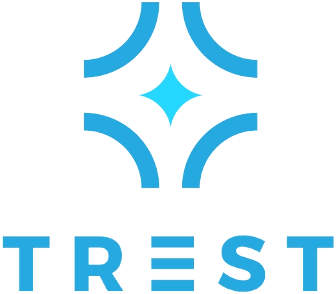
New Year, New Habits: Building a Routine for Incontinence Care
Share
As we step into a new year, it’s the perfect time to reflect on our habits and consider creating a routine that supports overall health and well-being. For individuals managing adult incontinence, building a structured routine can be an effective way to enhance comfort, confidence, and quality of life. In this blog, we’ll explore how you can establish new habits tailored to managing incontinence, and why consistency is the key to success.
Understanding the Role of Routine in Managing Incontinence
Incontinence can feel overwhelming, but incorporating consistent habits into your daily life can simplify its management. Routines offer predictability, helping you anticipate and plan for situations where incontinence may pose a challenge. Whether it’s adjusting your diet, staying hydrated, or practicing pelvic floor exercises, a structured approach enables better control and reduces the impact of unexpected leaks.
Many individuals with incontinence may feel apprehensive about public outings, work, or social gatherings, but with the right routine in place, you can reduce anxiety and experience more freedom. Consistency is key when managing this condition, and small but impactful changes can make a significant difference in your daily life.
Hydration Habits: Drinking the Right Way
One common misconception about managing incontinence is that reducing fluid intake can help prevent leaks. However, staying hydrated is vital for overall health, and dehydration can actually irritate the bladder, worsening symptoms. The key is to drink smartly:
-
Spread out your fluid intake: Sip water consistently throughout the day instead of consuming large amounts at once.
-
Avoid bladder irritants: Limit beverages like coffee, tea, alcohol, and carbonated drinks, which may exacerbate incontinence symptoms.
-
Monitor timing: Reduce fluid intake in the hours leading up to bedtime to minimize nighttime disruptions.
Developing these hydration habits can promote bladder health and make incontinence more manageable. It’s essential to listen to your body and adjust your hydration needs based on factors such as activity level, climate, and individual health concerns.
Dietary Adjustments for Bladder Health
What you eat can play a significant role in managing incontinence symptoms. Certain foods can irritate the bladder and make incontinence worse, while others can help strengthen bladder control. Starting the year with healthy dietary habits can have a positive impact on bladder health.
Here are some tips for managing incontinence through your diet:
-
Avoid trigger foods: Certain foods such as spicy foods, citrus fruits, and artificial sweeteners may irritate the bladder and increase incontinence episodes.
-
Incorporate fiber: Foods rich in fiber, such as whole grains, fruits, and vegetables, can help prevent constipation, which can exacerbate incontinence symptoms.
-
Focus on anti-inflammatory foods: Foods like berries, omega-3-rich fish, and nuts can help reduce inflammation in the body, potentially easing bladder discomfort.
By making thoughtful food choices, you can help improve your bladder health, reduce symptoms, and feel more confident managing your condition.
Pelvic Floor Exercises: Strengthening the Bladder
One of the most effective ways to manage incontinence is through pelvic floor exercises, also known as Kegels. These exercises strengthen the muscles that support the bladder and improve control over urination. Kegel exercises are easy to do and can be incorporated into your daily routine for long-term benefits.
Here’s how to get started:
-
Identify your pelvic floor muscles: The easiest way to locate these muscles is by trying to stop urination midstream. Once identified, make sure you practice Kegels without using other muscles, like your abdomen or buttocks.
-
Perform the exercises: Squeeze the pelvic floor muscles for five seconds, then release for five seconds. Repeat this 10–15 times in one session. Aim for at least three sets a day.
Incorporating pelvic floor exercises into your routine will help you maintain bladder control, reduce the likelihood of accidents, and improve your overall quality of life. Additionally, low-impact activities such as yoga, walking, and swimming can further improve your pelvic muscle strength and promote bladder health.
Creating a Morning Routine for Incontinence Care
The way you start your day can set the tone for the rest of it, and for those managing incontinence, establishing a morning routine that prioritizes bladder health is essential.
Here’s how you can start your day:
-
Hydrate early: Drinking a glass of water when you wake up helps rehydrate your body and kickstart your metabolism.
-
Eat a balanced breakfast: Opt for a meal that includes fiber and protein, such as oatmeal with fruits and nuts or a smoothie with leafy greens and chia seeds.
-
Practice pelvic floor exercises: Dedicate a few minutes to performing your Kegels to activate the pelvic muscles for the day ahead.
-
Plan bathroom breaks: Incorporate bathroom breaks into your morning routine, ensuring that your bladder is emptied before heading out for work or social events.
By making hydration, exercise, and bathroom breaks part of your morning routine, you can start your day off feeling more confident and in control.
Managing Incontinence in the Workplace
For many people with incontinence, the workplace can be a challenging environment. However, with some preparation and strategy, it’s entirely possible to manage the condition while maintaining a productive work life.
Here are some tips for handling incontinence at work:
-
Keep supplies handy: Carry extra incontinence products such as pads, TREST Elite Briefs, or undergarments in your desk or bag. These products offer discretion, comfort, and superior absorbency to help you stay confident throughout the day.
-
Take regular breaks: If possible, schedule bathroom breaks to prevent urgency or accidents. Make sure you’re aware of the restroom locations in your workplace.
-
Wear appropriate clothing: Choose clothing that is comfortable and easy to remove, making it simple to take bathroom breaks without feeling self-conscious. Dark-colored clothing can also help mask leaks if they occur.
By developing these strategies, you can feel empowered to go about your workday without worrying about incontinence issues.
Evening Routines for Better Bladder Health
Nighttime is a crucial period for incontinence management, as many people experience leaks during sleep. However, with a thoughtful evening routine, you can reduce nighttime disruptions and get a better night’s rest.
Here are some tips for improving bladder health before bedtime:
-
Limit fluids before bed: Try to avoid drinking large amounts of fluids in the two to three hours leading up to bedtime. This will reduce the chances of waking up in the middle of the night to use the restroom.
-
Avoid bladder irritants: Steer clear of caffeine and alcohol, which can irritate the bladder and increase urgency.
-
Relaxation techniques: Stress and anxiety can exacerbate incontinence symptoms. Consider practicing deep breathing, progressive muscle relaxation, or gentle yoga before bed to reduce stress and promote restful sleep.
By adopting a relaxing nighttime routine, you can improve both bladder health and your overall sleep quality, leading to a more refreshed and productive day.
Addressing the Emotional Side of Incontinence
Living with incontinence can affect self-esteem and emotional well-being, especially in social situations or when managing symptoms outside the home. However, emotional well-being plays a critical role in managing this condition effectively.
Here are some tips for addressing the emotional side of incontinence:
-
Seek support: Joining a support group or connecting with others who understand your experience can provide comfort and reduce feelings of isolation.
-
Practice self-compassion: Remind yourself that incontinence is a medical condition, not a reflection of your worth or ability.
-
Consider therapy: If incontinence is affecting your mental health, seeking professional support from a counselor or therapist can help you navigate these challenges with coping strategies.
By caring for your emotional health, you can build a more resilient mindset, making it easier to manage the physical aspects of incontinence.
Finding the Right Products for Incontinence
Using the right incontinence products can make all the difference in managing symptoms and ensuring comfort. Products like TREST Elite Briefs are designed for maximum absorbency and comfort, offering superior protection during both day and night. Their strong absorbent core holds up to 9500mL of fluid, making them a reliable choice for those who need extra protection.
Choosing the right products tailored to your needs can increase confidence and reduce anxiety about leaks. Make sure to explore different options to find the one that best fits your lifestyle.
Tracking Your Progress and Adjusting Your Routine
As you begin incorporating new habits into your routine, it’s essential to track your progress. Consider keeping a journal to monitor:
-
Changes in bladder health and symptoms
-
The effectiveness of your diet and hydration habits
-
The impact of pelvic exercises
-
Your emotional well-being and confidence levels
Tracking your progress will help you identify patterns, make necessary adjustments, and celebrate the improvements you’ve made in managing incontinence.
Conclusion: A Healthier, Happier 2025
Building a routine for incontinence care is a powerful way to regain control and confidence. By focusing on hydration, diet, exercise, and emotional well-being, you can improve your quality of life and enjoy the year ahead with peace of mind. Reliable products like TREST Elite Briefs provide the protection you need to face each day with confidence and comfort.
Start the new year by adopting small, sustainable changes that can help you manage incontinence more effectively. With the right routines and tools, 2025 can be your most confident year yet.
